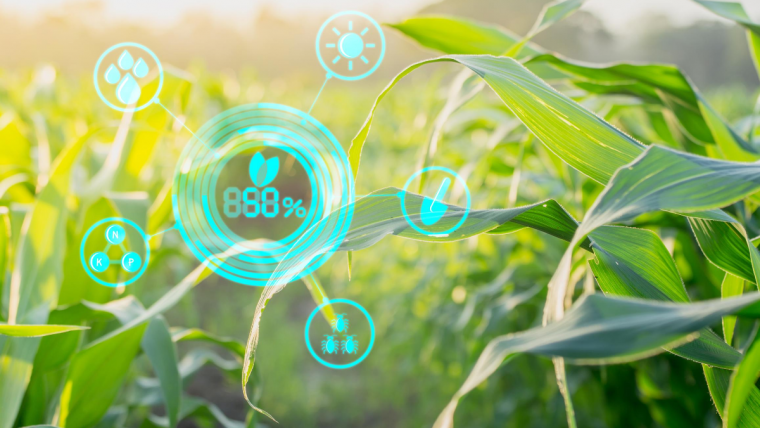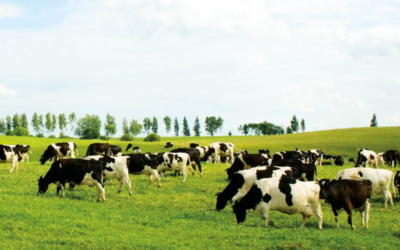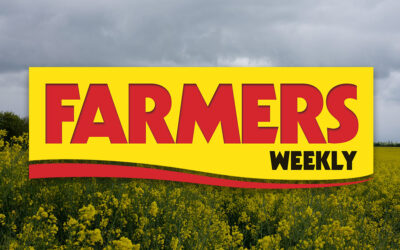Consumers are asking more questions about the meals on their tables: Where is my food grown? How is it grown? Is it sustainable? Is it environmentally friendly? This shift in consumer preference is changing the way that corporations work, because now, sustainability must become a permanent line item in their business plans. Not only is sustainably produced food becoming a non-negotiable for consumers and businesses, it also happens to be a solution to feeding the world.
At the Alltech ONE Virtual Experience, Ciarán Black, owner of Nuevo Growth, hosted a discussion with Ryan Rakestraw, director at Temasek International, and Claudia Roessler, director of agriculture for Microsoft, to further discuss how to sustainably produce more food. The consensus? Via sustainable agriculture technologies. There are many forms of ag-tech — from technologies that help with the efficiency of how food is produced to technologies that create sustainable packaging and even technologies that can reduce food waste.
“Now, ag-tech is making substantial progress. It’s one of the fastest growing areas, but it still remains one of the most under-invested subsectors in the global startup ecosystem,” said Black. So, if ag-tech is a solution, what needs to be done to hasten its road to success? Black proposed three methods:
- Encouraging investments in ag-tech
- Identifying sustainable agriculture technologies
- Stressing the urgency around a sustainable food supply
Investments: How can we make sustainable ag-tech more attractive to investors?
As awareness of sustainability grows, investors are taking notice. Rakestraw says there is a strong drive for sustainability today amongst most groups, including:
- Consumers. Consumers want to know the environmental impact of their purchases, and this influences a majority of their buying decisions.
- Businesses. Businesses are appointing directors with a sustainability agenda because consumers will continue to demand it.
- Farmers. In fact, Rakestraw says that most farmers are already environmental stewards.
“They’re looking after their land, they’re thinking about passing the farm on to the next generation, so this is something that they’re certainly thinking about and interested in,” he said. “I just don’t think they’ve had a good way to act on this.”
Because sustainability is, historically, an interest of farmers, is currently an interest of consumers and is now an interest of businesses, investors are primarily focused on companies that have implemented sustainability methods.
“The question is, if you don’t have some type of sustainability agenda or the ability to influence sustainability in your product or service, will you even continue to exist?” asked Rakestraw.
So, how can we ensure that we will continue to drive this sustainability agenda — especially when farmers, according to Roessler, are notoriously “late bloomers” when it comes to digital trends and advancements? There are many sustainable deliverables farmers need to achieve, including:
- Growing more while using fewer resources
- Tracking and measuring their sustainable footprint
- Telling consumers how their food was produced and where it’s coming from
Farmers need digital and data-related innovations on their farms in order to meet these deliverables, and luckily, as Roessler noted, “the amounts that are being invested in the ag-tech industry are increasing over the last couple of years.”
Investments are imperative for startups, universities and research organizations that have the goal of developing sustainable, environmental and agricultural practices.
“This is from anything like detecting pest stress or disease stress on a farm in a certain region to smart irrigation in another region,” said Roessler. “So, we want to help harness this ecosystem.”
It’s about more than just investing, though, and Roessler uses Microsoft’s startup programs as an example: They not only help invest but also help adjust the footprint, monitor sustainability goals, develop the process, market the products and deliver them to the buyer. Investors need to nurture startups to stimulate success. With this nurturing comes the speed that is necessary to “drive innovation at the speed that’s needed to address all those environmental changes.”
Identification: Where are the applications that can help agriculture create a Planet of Plenty?
Now that sustainability is on investors’ radars, it comes down to identifying sustainable ag-tech startups. Which startups should we be looking into? According to Roessler, we need to be looking at technology that increases productivity by growing more food that uses:
- Less energy
- Less land
- Less water
This is especially important because productivity has one of the biggest impacts on the environment.
“Think about if you could use 1.5 billion (fewer) acres of land in agriculture,” said Roessler. “This would be a significant purpose to what’s in our environmental goals.”
Another area to identify is risk prevention. Ag-tech that can monitor farms and the environment prevents incidents that lead to:
- Food safety issues
- Food waste
- Disease
- Abnormalities
Overall, Roessler stresses that it’s critical to address these issues before they arise, which will ultimately improve our whole food production process.
“I think that’s really the ultimate goal, which we need to enable now,” stressed Roessler.
Black then expanded on these points by reiterating the importance of identifying ag-tech that mitigates risk and creates a link to help the consumer understand sustainability within the supply chain.
But it doesn’t just stop at risk detection; Rakestraw listed several additional technologies that warrant investments, including:
- Gene editing and precision breeding systems for crops and livestock
- Insights around the microbiome and the use of synthetic biology tools
- Sustainable packaging of food products, using less packaging or biodegradable materials while still maintaining the safety and shelf life of the product
Rakestraw specifically highlighted the importance of ag-tech that reduces food waste, “whether that’s new coating technologies, optimized logistics or predictive analytics associated with matching supply and demand.”
Urgency: Will we embrace ag-tech quickly enough?
The growing population and increased environmental education add a sense of urgency to identifying sustainable ag-tech to invest in.
“So, we know that agriculture is becoming more sustainable, but just not fast enough,” said Black. “Is there anything we can do to increase the pace of that change? How do we go about doing that?”
Rakestraw listed three possible solutions:
- Industry collaboration — and not just within animal health and nutrition, but across industry segments. Through this collaboration, we will be able to educate consumers through quantifying and showcasing benefits.
- Public and private partnerships with government and industry to define standards, quantify metrics and regulate the messaging to convey to the consumer.
- Be bold and take some risks with moonshot goals associated with sustainability.
“I think the onus is on not only us as investors but (as an) industry to find these technologies that could have a significant impact and support them and help them come to life in this 10-year, 20-year, 30-year time period,” explained Rakestraw.
Digital technologies can increase the collaboration between startups, corporations and government. Will fast-paced industry collaborations lead us into a more sustainable future?
Roessler says yes, but not by itself. We need to build programs that are sustainable for many years — not just short-term initiatives. The societal impact of agriculture requires creating infrastructures like internet connectivity for rural farms and fostering talent in agriculture that can work with technology in the future.
While speed is important, Roessler says that longevity is also key. We need innovations quickly, but we also need to look at how technology evolves and stays current.
“This is really (something) we’re in for the long run, and I think that’s really what’s needed to drive a systemic change in the industry,” said Roessler.
Final thoughts
By attracting investors, identifying technologies and urging quick action, we can anticipate a strong push in sustainable ag-tech for our futures. With the population growing rapidly, the industry has a collective duty to ensure food for the masses, and nurturing farms through new technologies can make this happen. Because, as Black stated at the beginning of his discussion, “Agriculture has the potential to provide solutions, both to feeding the planet and combating climate change — but we must do both.”
Access on-demand content until May 2021, with new content added monthly. Visit one.alltech.com for more information.




